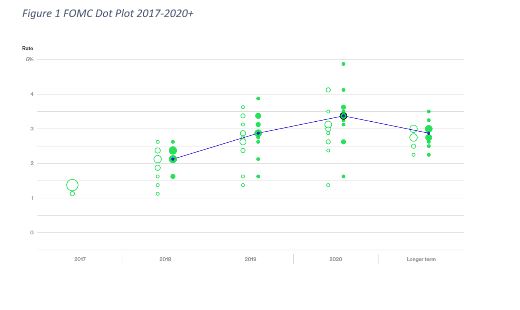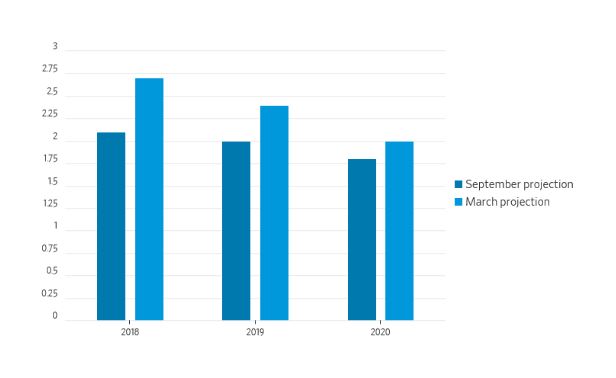With the release of its economic forecasts and, more importantly, its dot plot of future rate increases, the Fed is asking investors to “trust us, we know what we are doing”. Whether we should expect 2 or 3 rate hikes in 2018, is beside the point. We are asked to ignore current conditions and take a leap of faith that the economic conditions through to 2020 will warrant a steady drumbeat of rate increases, probably ending with a fed funds rate that is the vicinity of 3.5 per cent by 2020.
The Fed’s uses its dot plot to map out the future. Each dot represents a member’s view on the fed funds rate each year. The central tendency among the bankers is a federal funds rate of 2.9 percent by the end of 2019, implying three rate increases next year, compared with just two moves seen in the last round of forecasts in December. They anticipate that rates will hit 3.5 percent in 2020, up from 3.1 percent earlier in December, according to the median estimate (Figure 1). What lies behind this upgraded forecast?

Overall, FMOC members are buoyed by their own forecasts for economic growth over this time period (Figure 2). Compared to the December forecast, the FOMC’s March forecast calls for a substantial boost in the outlook for 2018 from 2.1 per cent to 2.6 per cent; for 2019 from 2.0 per cent to 2.3 per cent; and for 2020 from 1.8 per cent to 2 per cent. Everything is coming up roses.

But what about the present conditions and how are they going to influence this outlook? The Fed seems to gloss over present conditions and events while painting this rosy outlook. Some of the most important developments affecting future inflation and growth are manifest in today’s data. Consider these developments and what they tell us about the outlook for inflation, the key economic measure used to influence rates:














Leave A Comment